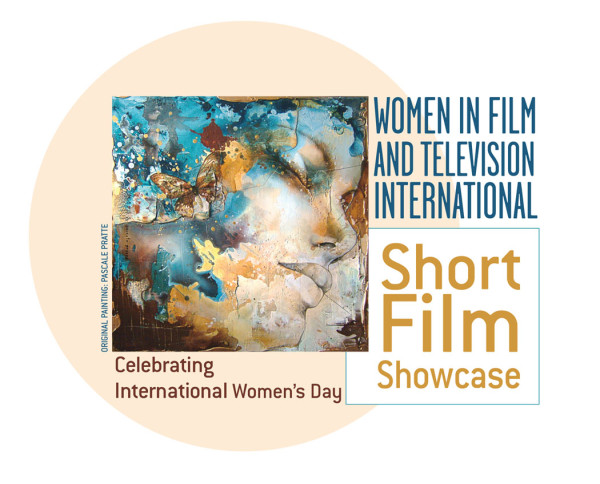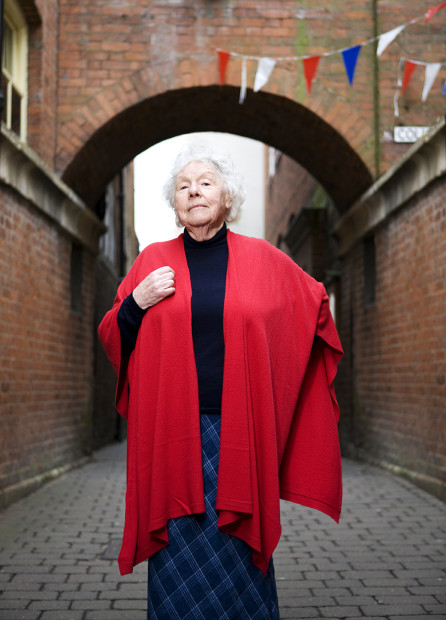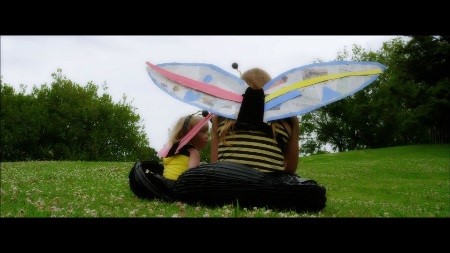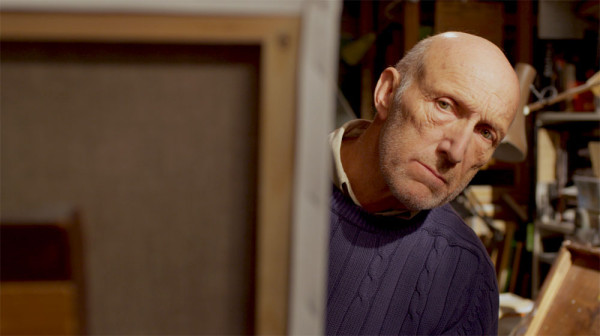 Last week I attended the WIF.D (Women in Film Dallas) special 2014 WIFTI program (Women in Film & Television International Showcase). Whew. This org likes their acronyms. I’ve been in Dallas for 2.5 years now, and it’s the first time that this org has been on my radar. The program, which featured eight short narrative films by eight female filmmakers from six countries, was terrific.
Last week I attended the WIF.D (Women in Film Dallas) special 2014 WIFTI program (Women in Film & Television International Showcase). Whew. This org likes their acronyms. I’ve been in Dallas for 2.5 years now, and it’s the first time that this org has been on my radar. The program, which featured eight short narrative films by eight female filmmakers from six countries, was terrific.
Before I discuss the individual films, I have to pose a few questions. In 2014, why are we still segregating women’s achievements from the general population? Are women’s films still not receiving the same amount of attention as men’s? Is there still gender discrimination going on? As an experimental video artist, I am not in touch with the nuances of commercial filmmaking—is it still a good ol’ white boys club?
The screening was in honor of National Women’s Day on March 8. I’m certainly not one to complain about a day that celebrates me and my gender. However, I wonder if relegating women’s films to a women’s film festival further marginalizes them? Why are the themes, subjects and ideas only relevant to women? It irks me when I’m asked to show my work in a gender-based exhibit or screening. Yet usually I comply, since I figure the more exposure, the better. Am I doing myself a disservice, since folks will ultimately think my work is only about gender? And why does the word gender immediately connote only women?
I do not wish to minimize WIF.D’s major accomplishments made over the past thirty years. Check out their website. They produce PSAs for non-profits, provide scholarships and grants to students and emerging filmmakers as well as have a variety of programming and events. I truly want to have a virtual discussion about this. So WIF.D members, and Texas filmmakers, join in the discussion. Carolyn Sortor, John Aasp, Richard Bailey, Mike Morris & Bart Weiss—this means you!

Rebecca Brand, The Campaigner (still)
Now—on to the films. There wasn’t a particular theme that connected the program, but most of the films had an element of quirkiness or surprise. The Campaigner by U.K. filmmaker Rebecca Brand had the distinction of being the shortest film and the only documentary in the program. The film features an interview with 78 year-old activist Joyce Brand. Her courage and dedication to fighting social injustice was awe-inspiring. In a culture where we denigrate our elders, this film venerates a person who, while not famous, affected major change in the world.
The films The Weather Girl, by Canadian Director Carleen Kyle, and In Safe Hands, by New Zealand Director Jackie Van Beek, both had poignant messages with quirky twists. When two bible-thumping evangelists knock on the door of a former weather reporter, she takes advantage of the situation and ditches them with her Alzheimer-affected, wheelchair bound father. She enjoys a day shopping and getting a makeover at the salon. The poignant moment comes at the end when she returns home. Her father has a lucid moment, takes her hand and there is a rare emotional connection.
In In Safe Hands, a teenage girl picks up a box at a hospital. The box looks like it holds cremated remains. While traveling on a bus, the girl looks inside and discovers a human heart packed in plastic. She delivers the heart in time for her grandmother’s funeral. In addition to the surprise appearance of a heart, the shocking bombshell comes during the credits, when we learn that during 1950-2000, a New Zealand hospital collected hundreds of hearts from dead children without parental consent. There was a collective gasp in the audience while the credits rolled.
I have bias towards dark irony, so it is no surprise that I enjoyed the Gaelic film 4 Bhanrion (4 Queens) by Director Victoria Colona. Four daughters play a game of poker with their elderly mother. She appears to die at the poker table. The daughters play another hand to determine who will inherit the estate. The cinematography with the muted color palette and smoky room reminded me of film noir. The acting was superb. The Gaelic language added additional poetic cadence, contrasting the film’s plot.
The program also included two films by Dallas Filmmakers/Directors Iris Lopez and Jing Yang. Lopez’s film Cielo Lindo tells the story of two homeless sisters struggling to survived on the Dallas streets. There are lovely moments during the film, such as when the girls imagine eating a bag full of hamburgers. Ultimately the film left me wanting. I didn’t feel any resolution. Perhaps that was the point.
Yang’s film My Super Valentine is about a young girl who stands up to the class bully. I appreciated the subject of a young female hero who takes on the big bad boy bully and saves her fellow classmate. Yet for my tastes, the film was a bit too sentimental.

Friday Tigers, written and directed by Aidee Walker, produced by Julia Parnell
My two favorite films in the line-up were Friday Tigers by New Zealand Director Aidee Walker and Je Veille Sur Vous (I’m Watching Over You) by French Director Elodie Fiabane. Friday Tigers is a story about the fierce love a mother has for her child and the all too common story of domestic violence. What made this a real gem was the creative use of animated drawing and imaginative dress-up play by the mother/daughter. Each day of the week, the duo dons a different animal costume, from bumble bees to wolves to tigers. While the happy-ending might not be realistic for most victims of domestic violence, the entire audience was rooting for her.

JE VEILLE SUR VOUS (“I’M WATCHING OVER YOU”), France, 19 minutes.
Writer / Director: Elodie Fiabane; Editor: Clemence Carrier
Fiabane’s portrait of an older male widower is at first deceiving. We seem him paint solitarily in his studio, while frequently gazing at the photograph of his deceased wife. He begins to spy on his neighbor’s children as they play. Immediately we peg him as a creepy voyeur. The end completely caught me (and the rest of the audience) off guard. The film has been resting heavily on my heart for the past week.
In closing, I’d like to return to an initial question. I was thrilled that the theater was full, although male attendees were in the minority. Would this program be possible in a mainstream festival? I hope readers will voice their opinion about the genderized art issue. (Also, it did not escape my notice that the acronym WIF.D is closely aligned to WIFE.)



11 comments
Colette,
Thank you for raising this topic. You called my name and I am happy to respond. But I should first qualify myself. I do not, at this time, work as a film or television professional. Nor do I work as an academic. I cannot say what the situation is for women in the commercial film and television industry or in academic film studies programs. I work as an independent filmmaker; folks in this line, regardless of race, gender, sexuality or age, tend to express the state of the individual in society rather than what its like to be a group. By musing on this idea, I hope I fall upon relevant answers to your questions.
I believe the best films are reflexive, that is to say they reveal the filmmaker’s sensibility. Shooting and editing a movie is the work of creating visual correlatives for complex concepts, such as time, space, love, power, and justice. Film, when its allowed to be something more than a commodity, reveals a filmmaker’s relationship with people, objects, and history. Although it often takes a lot of people to make a film, I think a film — when it is intended as art — is a highly personal medium.
It would be inappropriate for festivals to put the work of Kathryn Bigelow (Zero Dark Thirty), Amy Seimetz (Sun Don’t Shine), Heidi Ewing and Rachel Grady (Detropia) and Josephine Decker (Butter on the Latch) into a special women’s category. Yes, gender plays a part in one’s creative decisions — a lens for experience just as age and race are lenses of experience. But, typically, people don’t become filmmakers to participate in group think. People go into filmmaking to assert themselves as individuals, to rescue themselves from anonymity.
As for the pedagogy of Women’s Studies, I prefer text to film. Textual analysis does better at showing how female images in art and advertising reveal society’s conscious and unconscious attitudes toward women. Marina Warner, as an example, writes excellent books on female iconography. Her topics include the Virgin Mary, Joan of Arc; she examines works of art that portray women as nature and temptation, and statuary and coins that portray women as truth and justice. The feminist theologian Rosemary Radford Ruether looks past the maleness of Jesus in her writings, focusing instead on the liberating praxis of Jesus and his discipleship of equals. If anyone knows of a film that explores the nature of the feminine while providing historical context for todays debates similar to the brilliant and thoughtful styles of these writers, please let me know!
Film is very good at describing issues in society. But text is better at analyzing these issues and exploring subversive points of view.
As for the working day realities of film production, I worked on a freelance basis as a film and video professional in Dallas from 1992 to 1996. The people who hired me were women and the people who could fire me were women. In the field of commercial production, women often held positions as production managers and producers. I know that the organization Women in Film Dallas had been pushing for women to come into these situations of authority since the mid-1980s. And I know that, during my time in this industry, Women in Film Dallas was pushing for women to occupy the coveted seat of the director’s chair as well as seats of authority in the technical realm, such as director of photography and editor.
I can totally see the point of Women in Film Dallas raising money and awareness for their projects with a festival of films made by and about women. Nothing strikes me as exclusive or problematic about this model. An organization built, among other things, to advocate for better jobs and better pay for women in the film industry advertises itself well by showcasing talented women filmmakers.
And here I will contradict myself, a bit — for contradiction is inevitable in complex issues. Festivals dedicated solely to the matter of gender, race or sexuality risk altering an individual’s expression of his or her individuality to fit some specific argument raised by the festival’s programmers. Nobody endures the rigors of independent filmmaking just to deliver homilies to the choir.
Art dramatizes the gesture of choice. For this reason, art is often brought into political modes. This brings me back to my original comment. The best films are reflexive ones, even documentaries. I don’t mean the highly subjective documentaries of self-appointed moral gatekeepers. I mean films that come out of a temperament strong enough to take a patient and open look at society’s troubles and inventions.
Creating visual correlatives for the troubles, doubts, epiphanies, and pleasures of the world is a filmmaker’s most important endeavor. The goal is truth, which I describe as something new with a ring of the familiar. That is, something new enough to surprise us and catch our attention and familiar enough to remind us there are consequences for the ways we treat one another.
We all know there are more films, more festivals, more cinema and gallery screenings than there are moments of truth. The trick is, how do we bring the modesty of true moments to audiences? Does the way lie in specialty festivals — festivals specific to women, race, and sexuality? Or perhaps those festivals dedicated to micro budget films?
I know this much is true. Festivals of any stripe make good platforms. The are fun and they are civic. Their entry fees and ticket sales often go to good causes. Excellent conversations spring up around them. But a festival does not bestow legitimacy upon a film. Legitimacy comes out of an individual asserting oneself as an individual (as opposed to a expressing one’s self as a part in a group). Legitimacy comes to a filmmaker who rises above anonymity and group think not by use of spectacle or political content, but by using film as a medium for fashioning a modest but unmistakable truth.
I will write more about this later but since I was asked, I will give you a quick response before i head out to a meeting.
This is something I and other programmers struggle with. Do we put programs (particularly shorts) together by affinity groups or subjects or as some festivals do by randomness (short block 12).
There was a time when I did women’s shots, afr am shorts gay/lesbian shorts, because it is easier to get an affinity audience to come. But I did feel like I was ghettoizing the work and that was just not right.
But at the same time i have defiantly noticed that sometimes affinity groups will ONLY come for their film and not either a different group or something more general.
I do try to think while scheduling, if someone would like this , what else might they want to see and put them near each other.
more later
bart
Richard,
Thank you for such a thoughtful response. You have raised quite a few ideas here.
My friend who attended the screening with me asked me who the audience is for short independent films/videos. My answer was to look around the theater. He responded, “Is that all?” His point was well taken. There aren’t enough opportunities to expand the already too-limited audience base. Although my friend is very involved in the Dallas art scene, the only time he has gone to experimental screenings is with me. That brings me to a few of your closing points.
“Nobody endures the rigors of independent filmmaking just to deliver homilies to the choir.” (this is always MY fear as a female video artist)
“We all know there are more films, more festivals, more cinema and gallery screenings than there are moments of truth. The trick is, how do we bring the modesty of true moments to audiences? Does the way lie in specialty festivals — festivals specific to women, race, and sexuality? Or perhaps those festivals dedicated to micro budget films?”
I’m not sure, but I agree that the festival platform opens up the conversation for moments of truth.
@Bart–Thanks for responding. Yes, it does feel like ghettoizing the work. Especially when experimental shorts are already marginalized; it’s like getting the double whammy. But I do think the idea of programming with different themes and merging blocks makes a lot of sense. In DVF–the short blocks always seem to have some themes that create unity in the program. Looking forward to more thoughts later…
Thanks Colette for starting this conversation. I can’t speak so much to “independent film” which is really a somewhat different sphere than I work in. As to experimental film and video art, I don’t know the numbers, but I sense that a good percentage of the work (and the very best work) being made is by women and I think (I could be wrong) that much of this work is being shown at galleries and festivals in pretty good proportion to work made by men.
I don’t know if this holds true in other areas of moving image culture. I assume not.
Slightly off topic, but to address your friend’s question about audiences for short/experimental films, I’d say maybe “that’s all” in Dallas. As we know, there are other parts of the country where this isn’t the case. I really miss the packed houses for screenings of films by Michael Snow, Sadie Benning, George Kuchar, and other’s I experienced in Chicago, or the large audiences I’ve performed for in New York. Anyway, preaching to the choir here, I suppose.
My own impressions is that works by white men generally continue to predominate in exhibitions and otherwise. As an admittedly statistically insignificant example, among the artists included in the openings I hope to attend this weekend, 19 are men and 2 are women; sadly, this does not seem to me unusual.
In my own most recent curatorial effort, I selected substantially more works by women than men, though the show had nothing particularly to do with what might be considered “women’s issues,” nor did I make any special effort to include more women. There were, however, disproportionately few minorities.
Though I personally wouldn’t like to have to adhere to hard quotas and don’t plan to start, I have resolved to try in the future to remember the likelihood of my own unconscious biases and to make a conscious effort to at least consider what things might look like if quotas were applied in any curatorial selections I may make. And I hope for my own sake as an artist, as well as others’, that other curators will do the same.
That said, I’m sure there are many factors behind the predominance of white males; but until such time as women and minorities are proportionately represented in exhibitions and otherwise (which probably won’t happen until they’re proportionately represented among curators and other positions of power), I ruefully accept that there continues to be a need for organizations and venues dedicated to exhibiting work by women and minorities.
Thanks Mike for your comments. I just read Darryl’s recent analysis of CADD galleries and the 37% number of women shown is stronger than I would have guessed.
This response is from Dallas artist, curator and critic Ryder Richards:
” I also don’t know if an independent festival for women’s film is necessary. In general I think segregation as a means to focus attention has a pejorative stance built into it, so that while it celebrates something that may be under represented it also marks out the artists as ‘other’, which can (but doesn’t always) lead to ‘pity’ politics. ~ Of course I am a white guy living a middle class life, so I really can’t speak except from my ivory tower of academia. ~ I thought it was interesting that you said there were few male attendees, which sounds like it becomes women supporting women, which is kind of cool, yet makes me wonder if men are turned off by the theme of women films. ”
later comment–“Do you think that by marking it as ‘women’ it intrinsically alienates men? Or maybe it says “this is not really about you” or “you better be very comfortable with women’s politics to attend”? Do you think that also alienates other women who don’t want to participate in something that seems to have an agenda?”
My response is yes, yes, and yes. I do think men shy away from a “Women’s” anything event.
on the other hand there is something empowering about being in an audience that feels the same way and feels , yea! That’s why there are so many black, latino and other feasts.
Also when you are not depicted as you want to be there is a reason to reclaim those images in a fest or screening
and there clearly is a social aspect, orbs like WIF Dallas like to get together and seeing films is a good way to do that
and it is far better to see more films and have people coming to see them than not.
I agree with a lot of what’s been said already — I too sometimes think, in an ideal world, that we shouldn’t have gender or race-focused film screenings, history months, or measure gallery shows by how many of each are represented. Ideally it all should be part of the same picture, or the same history. But, knowing how some thought leaders still behave toward women (contraception, equal pay, or even Bill O’Reilly’s statement that “there’s gotta be something inherently wrong with a female president) I say we should probably still be ok with screenings that illuminate issues especially pertinent to women (and other minority communities) — if only for the sake of highlighting experiences from points of view that continue to require broader understanding from the mainstream.
The problem however, is films presented that way don’t usually reach an audience outside of those interested in the first place. Hell, the majority of people don’t even go to general film festivals. But it does help those who are interested in supporting affinity groups to hear a “pep talk” or to deepen their already focused understanding on a particular segment of the population.
I think the best way to go about it is for curators and film program directors to incorporate the varieties of subjective experiences (whether based on gender, ethnic, LGBT, etc) into regular streams of programming, based on what the festival’s focus may already be — as Carolyn S. put very eloquently above.
I think this particular program (based on your descriptions) would do fine in a general shorts lineup. The case study I’d like to see is what consistencies or inconsistencies there might be in an audience’s reception of the films based on what context they were shown (i.e. under the umbrella of Women’s Day or a general shorts program as part of a larger festival.) Nice review, and good topics to discuss Colette.
Thanks John for your thoughtful response.